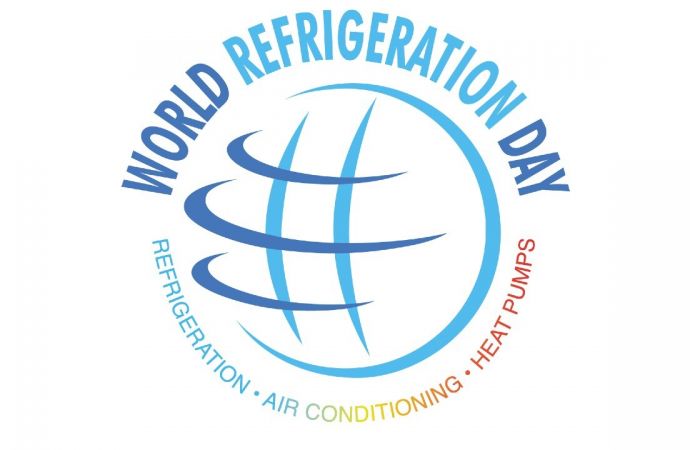LIFE FRONT report looks at ways standards bodies can safely increase hydrocarbon charges for RACHP equipment.
_1588767190.jpg)
LIFE FRONT, an EU-funded project that aims to remove implementation barriers posed by legacy charge-limit standards for flammable refrigerants in refrigeration, air conditioning, and heat pump (RACHP) applications, has released a new report with recommendations on how to safely raise the charge limits.
With this new report, which includes results from laboratory testing, LIFE FRONT recommends measures to minimize concentrations of flammable refrigerants in the case of an equipment leak; implementation of mitigation measures in performance testing; and increasing charge size for flammable refrigerants, focusing on smaller equipment, such as display cabinets, ice cream freezers, small/packaged ACs, and small heat pumps, as described in the access categories “a” and “b” in the EN 378-1 (2016) Standard. This European standard provides the basic safety and environmental requirements, definitions, classification and selection criteria for refrigerating systems and heat pumps.
shecco, publisher of this website, is a participant in the LIFE FRONT project.
"By proposing these new approaches to determining charge limits, it is intended to prove that the safe application of higher charge limits is possible, and that future applications of safety standards will result in charge limits that enable a far greater and wider application of hydrocarbon refrigerants without resulting in a significant risk increase for users," explained Daniel Colbourne, Engineer at German Consulting Firm HEAT GmbH and Lead Technical Expert of the LIFE FRONT project. "This will, in turn, result in reduced greenhouse gas emissions from the sector, supporting countries in meeting their international GHG emissions reduction obligations."
Colbourne co-authored a separate study, published in the International Journal of Refrigeration (April 29, 2020), that addresses the charge-limit question in further depth. The study – “General framework for revising class A3 refrigerant charge limits – a discussion” – reviews the published literature on how charge limits in safety regulations could be revised to enable a wider application of A3 (flammable) refrigerants.
Standards bodies are already starting to revisit charge limits for hydrocarbons. For example, last year, the International Electrotechnical Commission published a long-awaited update of its global 60335-2-89:2019 standard for self-contained commercial refrigeration cabinets, raising the charge limit for A3 (flammable) refrigerants to 500 g from 150 g.
Numerous regional standards bodies are in the process of adopting some version of the IEC standard.
As the LIFE FRONT project strives to improve system design to address flammability risk, the report provides a “comprehensive base of information on how the RACHP sector would be better able to extend the use of flammable refrigerants safely, or with a minimum level of risk increase, and be better able to realize the benefits afforded by natural refrigerants,” said Pauline Bruge, Project coordinator on shecco’s Market Development Team.
The report discusses the charge-size limitations and provides extensive analysis of testing on heat pumps made by manufacturers ait-deutschland GmbH and NIBE AB. It also provides research on air conditioners and small refrigeration equipment, including results obtained from other projects as well as from tests on refrigeration cabinets at AHT facilities (presented in a series of annexes to the report).
The analysis and testing presented in this report “prove that the current application of safety-standard limits on flammable refrigerants charges are too restrictive for the application of R290 in most RACHP applications,” said Bruge. “This report further proves that, with judicious application of design principles to prevent certain forms of leakage or the presence of ignition points, larger charge limits could be applied for a number of applications.”
Determining safe charge limits
The report proposes a range of possible approaches for determining safe charge limits, including the use of calculation, experimental and risk assessment methods. This is coupled to an analysis on how far charge limits should extend, weighed against what legislative requirements.
The project supports the design and implementation of experimental methods. For example, RACHP equipment is placed in a test space and a refrigerant leak is simulated; then measurements are taken of concentrations around the equipment and test space’s floor for the duration of the release and for a period thereafter. Provided that the concentration does not exceed some fraction of the refrigerant’s Lower Flammability Limit (LFL), the equipment can be deemed to pass the test.
The report also proposes an improved approach for calculation methods based on the construction of the RACHP equipment’s enclosure, where the leaked refrigerant can escape into the room. This method considers a leak rate and enclosure characteristics (internal dimensions, height and position of openings, etc.) such that by the end of the release, floor refrigerant concentration does not exceed a predetermined minimum level of safety.
Last October 8, LIFE FRONT published Europe’s “largest leakage size database” (the refrigerant leak size database plus the concentration database) for equipment using flammable refrigerants to help improve overall safety measures for systems using such refrigerants.
The LIFE FRONT report is available in the Downloads section of the LIFE FRONT project website.
Related stories



